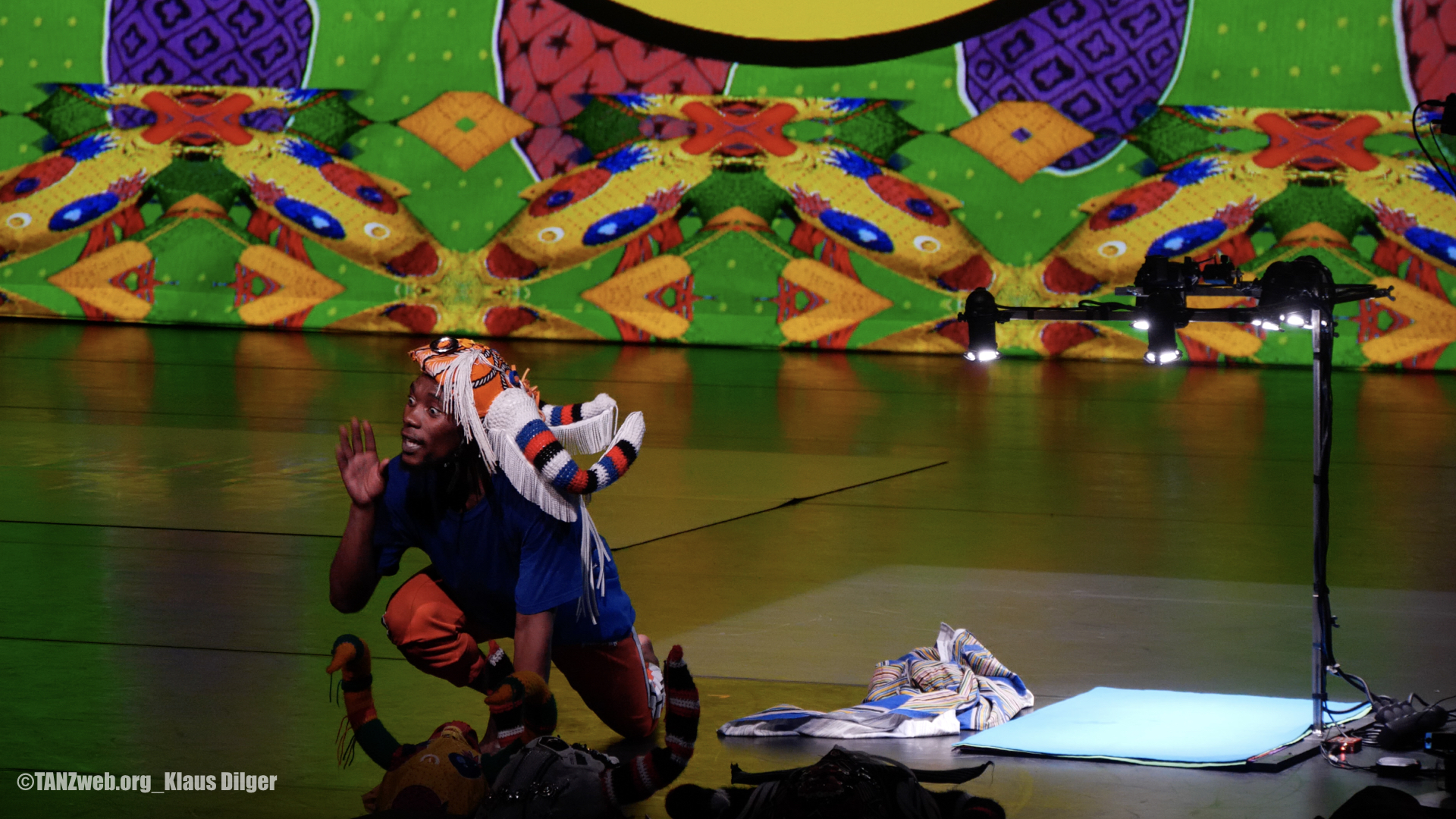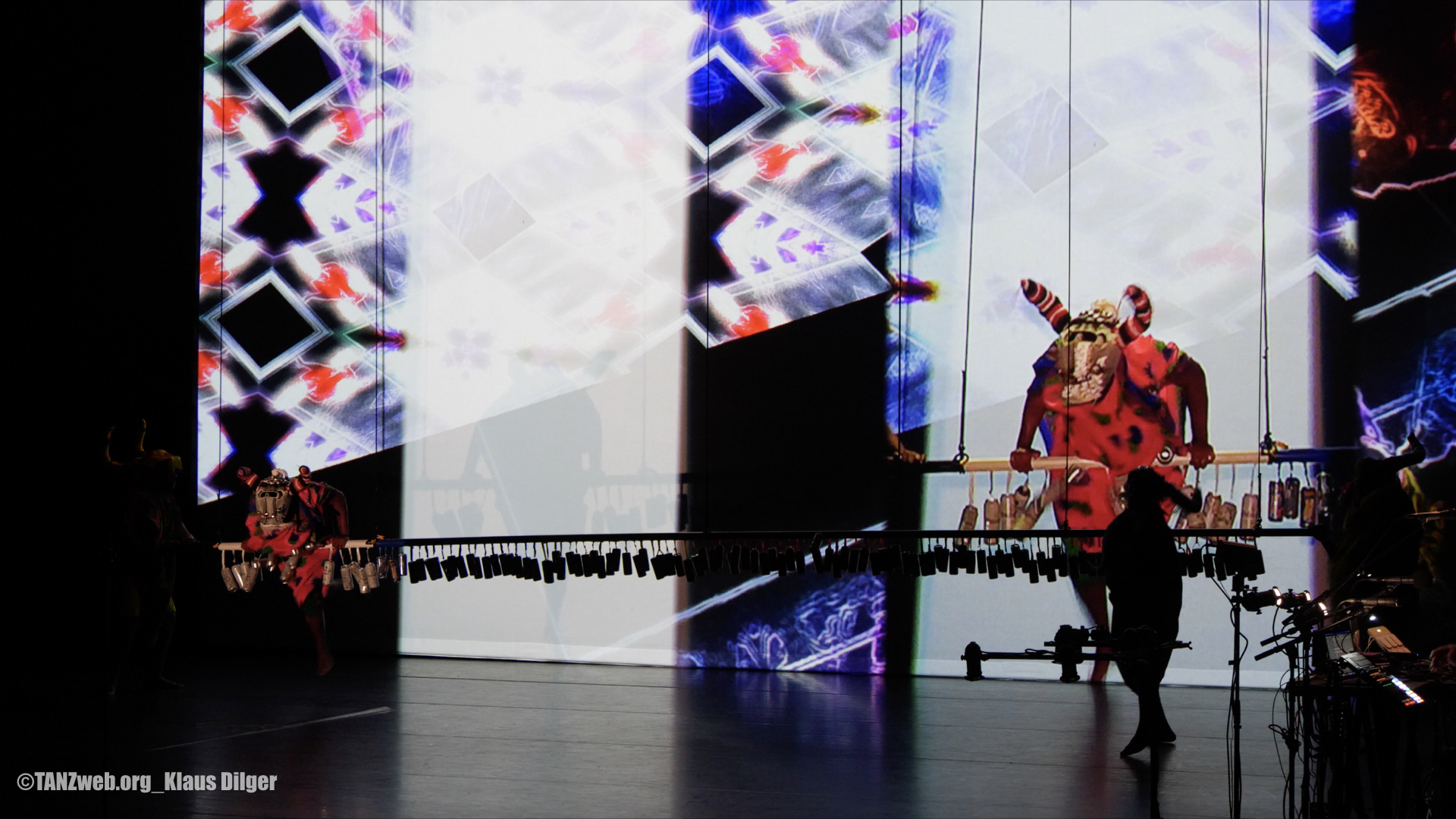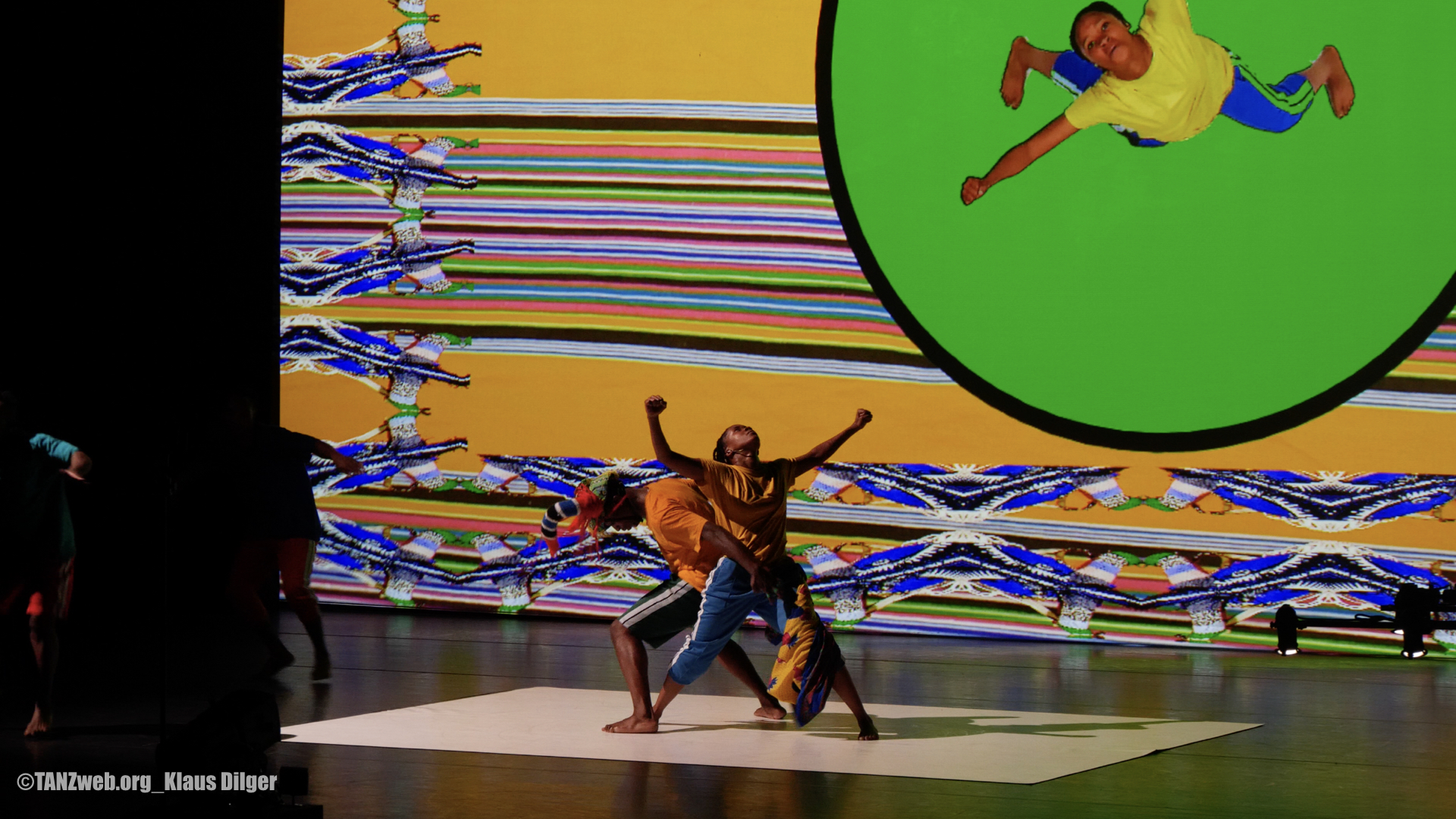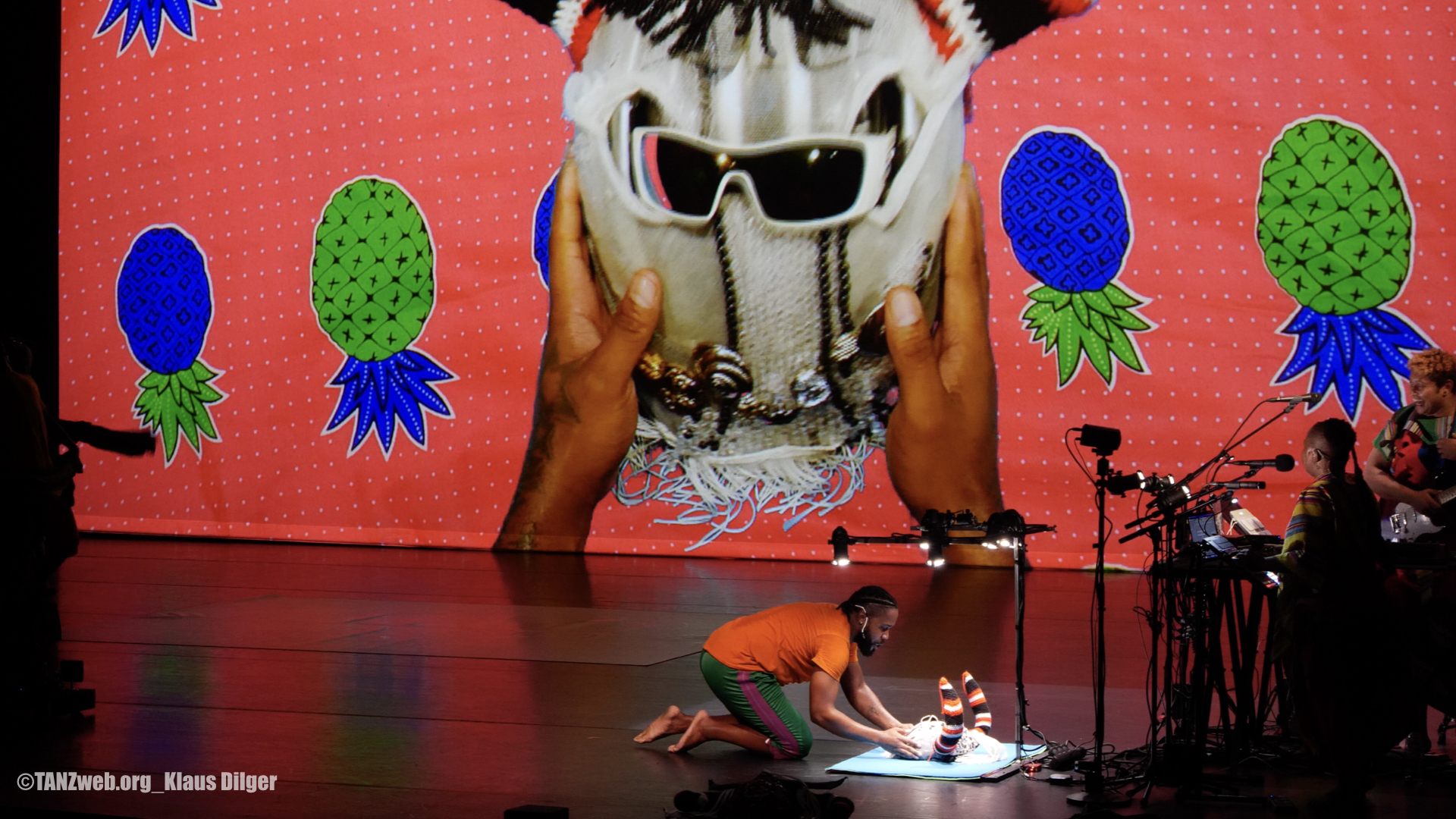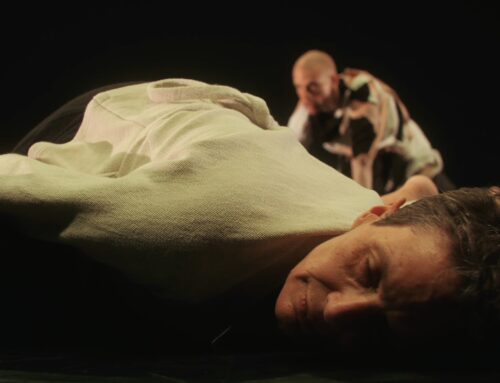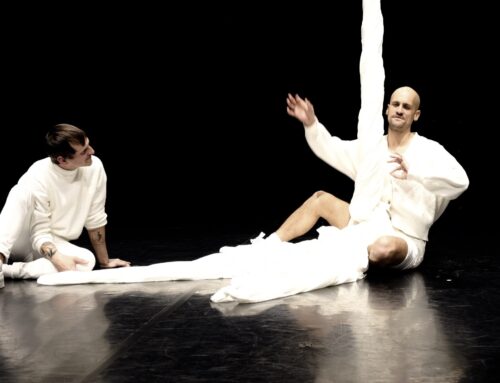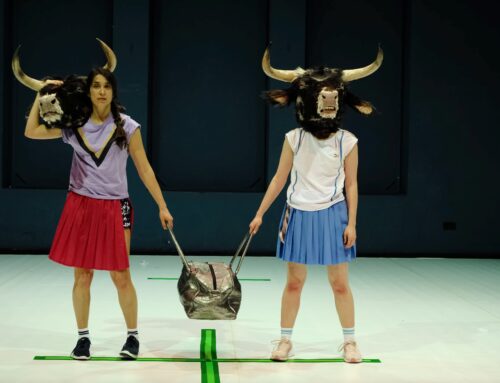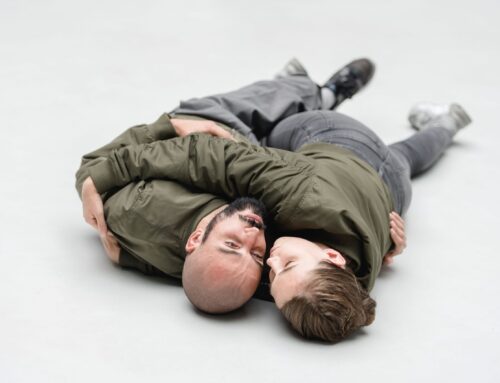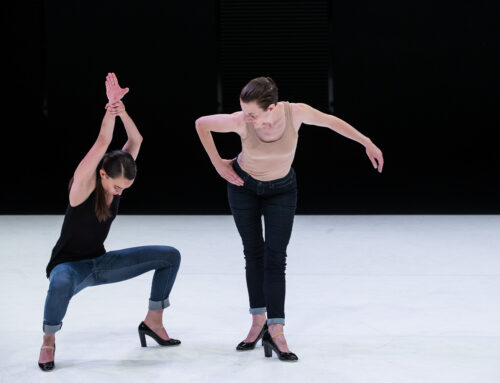Robyn Orlin presenting at Theater Kerkrade
We wear our wheels with pride and slap your streets with color … we said ’bonjour’ to satan in 1820
Stunning performance at schrit_tmacher justDANCE! 2023
by Thomas Linden March 23, 2023
translated by Karoline Strys
For her guest performance at schrit_tmacher festival in Kerkrade, South African choreographer Robyn Orlin has chosen a production with a particularly long title: „We wear our wheels with pride and slap your streets with color … we said ‚bonjour‘ to satan in 1820“. This phrase refers to the historical background of the choreography that ultimately swept the audience in Kerkrade off their feet. Orlin refers to the era after the Napoleonic wars, when there was great unemployment in England and, due to a first climatic catastrophe, more Europeans were settled in South Africa. The tragedy of colonization began, its social resonance we can perceive until today. Orlin, however, does not lead the discourse with a gun in her hand. Rather, her choreography is inspired by an observation from her own childhood. Back then, in Durban, she saw young black Zulus carting their rickshaws carrying white passengers through the city. Dressed with headdresses of feathers and horns, they pulled the two-wheeled vehicles along the streets as if they were to take off elegantly and fly away. They transformed an actually humiliating occupation into a dignified job that demonstrated attitude. And attitude is the subject matter that interests Robyn Orlin as a choreographer.
Her six-member ensemble Moving Into Dance Mophadong combines breakdance and African movement patterns with a visual presentation of traditional Zulu objects. A world of colors and shapes unfolds in which the dancers take center stage. You see the headdress with the horns or the fabrics in large projections. Orlin’s color dramaturgy is overwhelming at times. She works virtuously with reds and greens, captured by precise camera work and a discreet computer program.
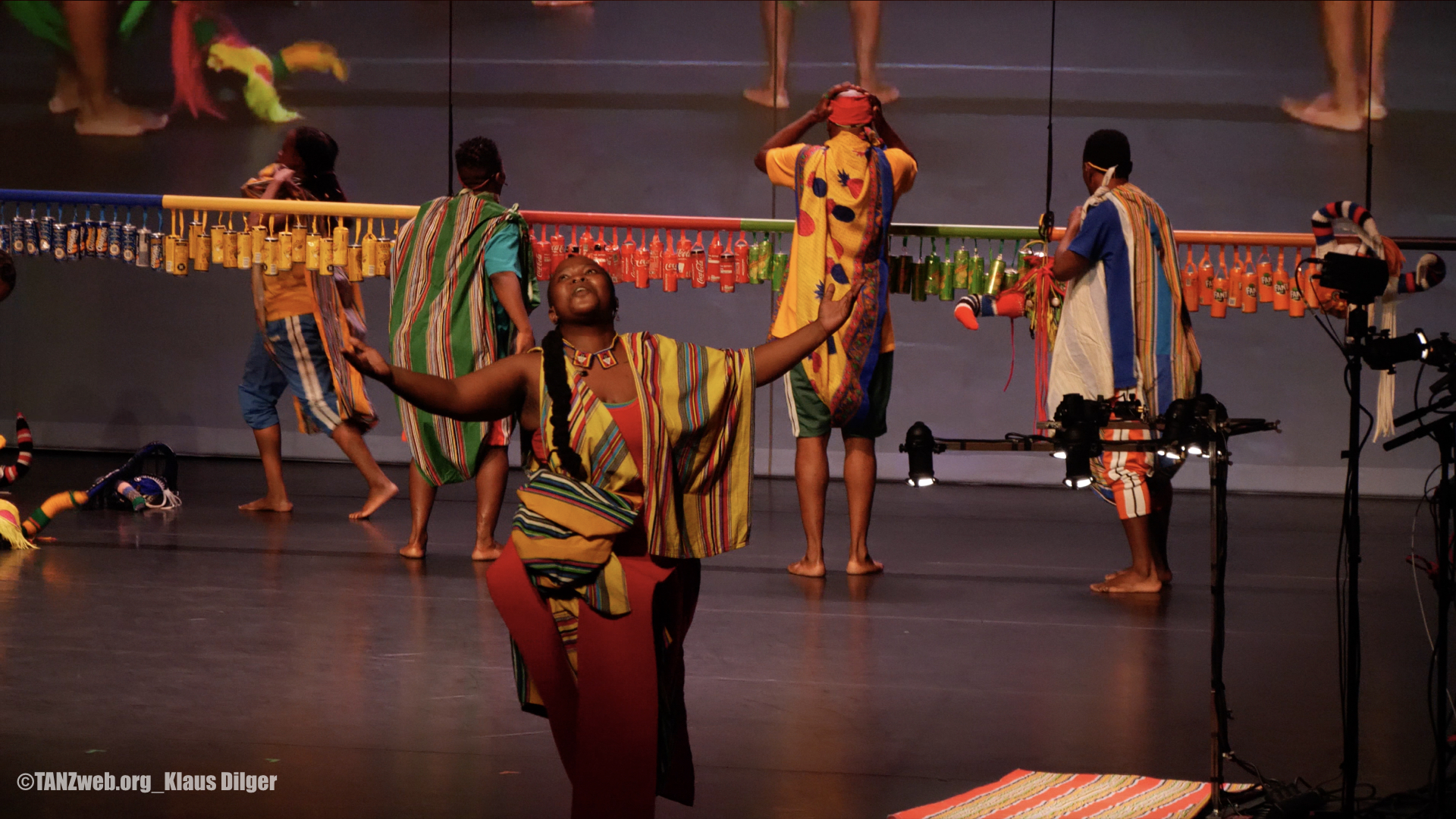
ROBYN-ORLIN©TANZweb.org_Klaus-Dilger
On the spacious stage in Kerkrade, Orlin establishes an astonishing proximity to the dancers, who can be seen in close-ups directly in front of you. Proximity is essential to the South African choreographer’s concepts. And it always takes two. She demonstrates this right away in the opening sequence. The ensemble comes slowly, almost unnoticed onto the stage. The spotlight is missing. The dancers ask the technical team to give them light. This appears but keeps being switched off. At this point, the question of brightness has long since become a metaphor for the fact that only those who stand in the cone of the spotlight receive attention. A scene that sums up Africa’s fate.
Robyn Orlin does not stage it accusingly, however, with a friendly humor that immediately takes the whole auditorium on board. The audience is enthusiastic and this wave of affection endures until the standing ovation at the end. Meanwhile, the music works with drums and chants, in which the repetition has a trance-like effect. The audience is encouraged to swing their arms rhythmically, causing a wave of laughter roaring through the auditory. Here, everyone present receives an oxygen shower that has a lasting effect. Despite all the good humor, the production – which sometimes takes on the character of a performance – never gets stranded in an ingratiation. Not for a second does the difference between black and white dissolve into sociable togetherness. Dialogue always includes differentiation. But the power of proximity opens up perspectives for strategic action in the future. You just have to get to know each other and then bridges will be built by themselves. Robyn Orlin, in any case, subtly combines spontaneity with political commitment. In the final image, when you see historical footage of the rickshaw drivers dancing across the street with their beaded headdresses, the magic of their attitude becomes obvious. They did not want to be known as victims of colonial oppression but to be themselves.
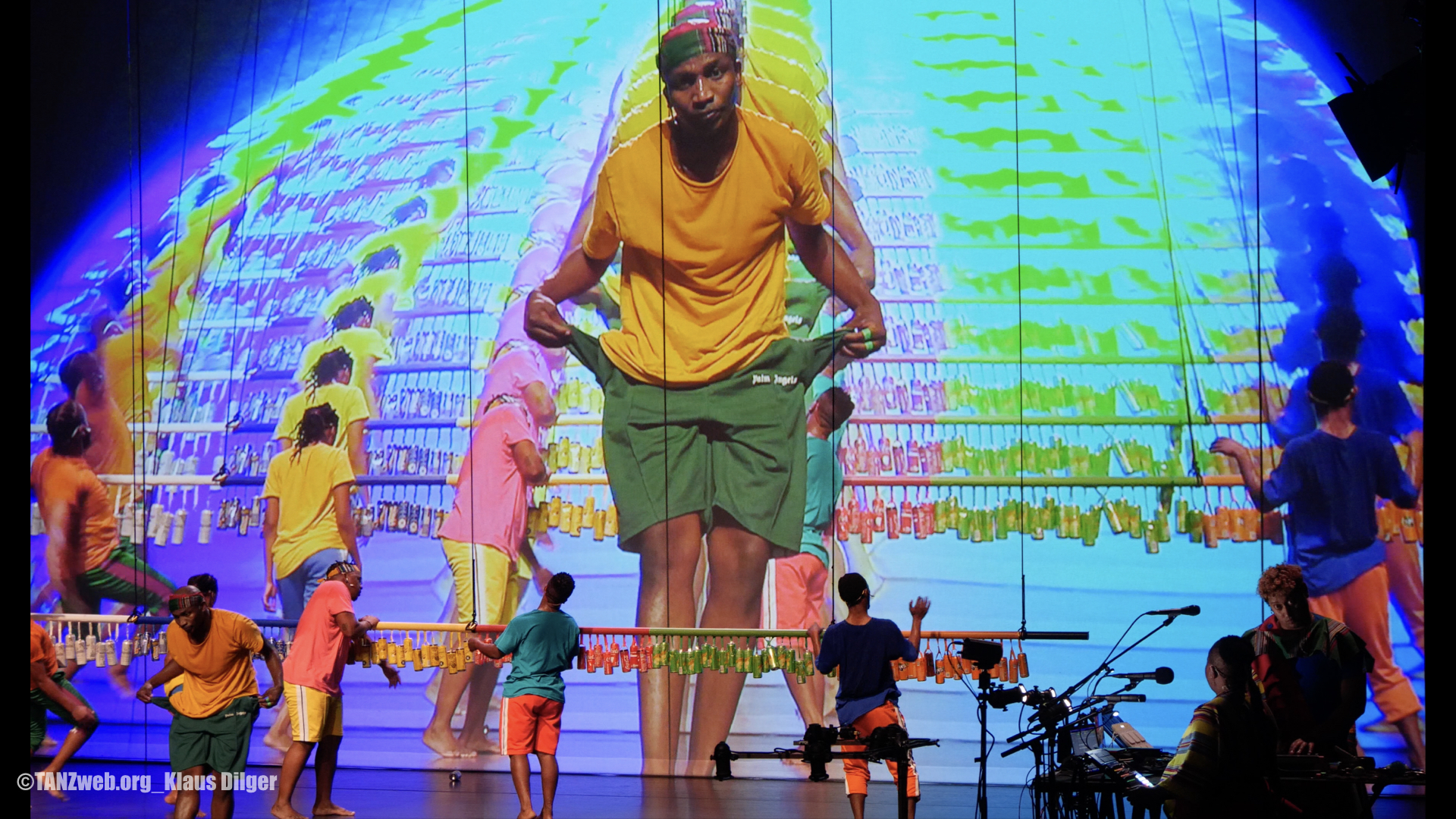
ROBYN-ORLIN©TANZweb.org_Klaus-Dilger

